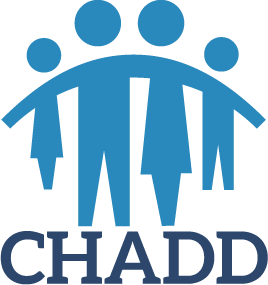Prescription in Peril: Navigating Adult ADHD, Stimulant Shortages, and the Telehealth Lifeline
Attention Magazine December 2024
 In October, the CDC released new data showing that almost 15.5 million adults in the United States are living with ADHD. Over half of those individuals received their diagnosis in adulthood. For many, like myself, the diagnosis comes as a relief—a way to understand years of impulsivity, inattention, and struggles with daily life. I was diagnosed at age thirty-six, after first one, then two, and ultimately, four of my five children were also diagnosed with ADHD. I cannot overstate how validating it was to connect the dots finally. But with that validation came challenges. I could not have predicted that managing ADHD as an adult, especially when your kids are also diagnosed, would, in some ways, be just as wild as my undiagnosed life.
In October, the CDC released new data showing that almost 15.5 million adults in the United States are living with ADHD. Over half of those individuals received their diagnosis in adulthood. For many, like myself, the diagnosis comes as a relief—a way to understand years of impulsivity, inattention, and struggles with daily life. I was diagnosed at age thirty-six, after first one, then two, and ultimately, four of my five children were also diagnosed with ADHD. I cannot overstate how validating it was to connect the dots finally. But with that validation came challenges. I could not have predicted that managing ADHD as an adult, especially when your kids are also diagnosed, would, in some ways, be just as wild as my undiagnosed life.
Psychologist Russell Barkley calls ADHD the “most treatable chronic health disorder in the world” (Barkley, 2022). He notes that stimulant medications are unmatched in the mental health field, with between 80-90% of individuals experiencing significant ADHD symptom relief when effectively treated. These medications may have side effects for some individuals, but they are manageable and often far better tolerated than the majority of psychiatric medicines (Barkley, 2022).
I was one of the fortunate 80-90%. The medication I was prescribed worked incredibly well! My life was stable and well-managed. That is, until 2023 when roadblocks suddenly appeared in the form of US Drug Enforcement Administration production limits and pharmacy stock issues. My ability to access what I consider to be life-saving medication—for myself and my children—came to a screeching halt, and my entire family felt the impact.
Medication mayhem: battling ADHD and stimulant shortages
For the past eighteen months, one of the biggest challenges for ADHD adults and parents like me is simply getting our medications. Stimulant shortages have become a constant source of frustration. According to the newly released CDC data, 71.5% of adults taking stimulant medications reported difficulty filling their prescriptions in the past year. As someone responsible for ensuring my entire family gets their meds—five of us in total—I can attest to these challenges and the havoc they wreak on individuals and families impacted by ADHD.
For many weeks, navigating this shortage became a full-time job. I sought support from ADHD organizations like CHADD. I spent hours driving across our major metropolitan city, I called multiple pharmacies, I know the interactive menu prompts for all major pharmacy chains by heart, and I spent even more hours listening to questionable on-hold music. I’ve braved countless delays. And I was willing to participate in this scramble if it meant that no one in my family would have to go without their ADHD meds.
Not taking my ADHD medication is not just a minor inconvenience, just as untreated ADHD isn’t just a little brain fog. It’s risky. I recognize that I say this from a position of privilege. As the current president of the CHADD board of directors and as a licensed mental health clinician and ADHD coach, I’m fortunate to have in-depth knowledge of how this system functions. Yet even with this level of expertise, I still spent days trying to fill prescriptions. For individuals not used to running into roadblock after roadblock, it would be almost impossible to successfully obtain their life-saving medication.
Before I was diagnosed and started on medication, my life was chaotic: speeding tickets, impulsive shopping sprees, forgotten bills, and strained relationships. With my diagnosis, treatment, and the proper medication, my world changed—I could focus, plan, and even enjoy time with my kids. Keep in mind, that’s just me. There are four other people in my family in the same boat. My children all have ADHD and something else. ADHD and autism spectrum disorder, ADHD and bipolar disorder, ADHD and dysgraphia, ADHD and anxiety… the list goes on. They need their medication to focus in school, to have the presence of mind to say no in risky adolescent situations, and to be safe behind the wheel as they become new drivers. Our family’s stability disappeared the moment the stimulant shortage hit us.
That’s just the tip of the iceberg—untreated ADHD is linked to higher risk of accidents, substance abuse, and even early mortality. I’m happy to report that in the fifteen years since I started taking stimulant medication, I’ve not received a single speeding ticket! My sixteen-year-old son did, however. Last year, there was a three-week period when we couldn’t get his prescription filled due to the shortage. During that time, he got into his first car accident (thankfully, everyone was okay), got his first speeding ticket, and failed to turn in over thirteen separate homework assignments. ADHD medication works.
From chaos to clicks: how telehealth saves ADHD lives (and time)
The COVID-19 pandemic, while challenging in many ways, brought with it a massive advantage for individuals with ADHD: telehealth. The new CDC data shows that 46% of adults with ADHD have used this telehealth lifeline to manage their condition (MMWR data). Telehealth hasn’t just made life easier; it’s made treatment more accessible. Whether you live in a bustling city or a more remote area, telehealth breaks down barriers to care. And for families juggling multiple ADHD diagnoses, like mine, that’s no small thing.
The US Food and Drug Administration recommends but does not require medical practitioners to see their patients on stimulant medication every ninety days to have their prescriptions refilled. The physician is encouraged to use their best judgment and current medical best practices regarding the frequency of visits and the number of refills allowed. Because I’ve been stable on my ADHD medication for several years, I see my psychiatrist every six months. Our pediatrician requires our younger kids to check in every three months unless we need to make a change. When that happens—and it does, more frequently than you would expect—we need to see the doctor every thirty days until my child is stabilized on the new medication or dosage.
If we go in person to these appointments, it’s an average loss of four hours to my work day and my child’s school day. With telehealth, my kids can hop on a quick video call with their prescriber between classes, which beats missing half a school day for an appointment. Plus, we still check in with our primary care provider for annual in-person checkups, so it’s a perfect balance of convenience and comprehensive care. Virtual appointments have saved me both time and sanity. And with five of us on stimulant medications, time is a precious resource.
Dialing down the distraction: the importance of extending telehealth flexibilities
Unfortunately, this lifeline is in jeopardy. Current telehealth regulations, expanded during the pandemic, are set to expire on December 31, 2024, unless the US Drug Enforcement Administration extends them or Congress intercedes to pressure the DEA to extend.
If telehealth access is reduced, millions of children and adults with ADHD could be forced back into overbooked in-person systems, facing long wait times and potential delays in care. And those delays? They don’t just affect focus; they can put lives at risk. Without telehealth, people in rural and underserved communities may lose access to ADHD specialists entirely, forcing them to go without treatment or travel long distances. This would exacerbate existing health disparities, particularly for marginalized communities.
For families like mine, that’s not just inconvenient—it could disrupt or prevent treatment altogether. The ability to balance in-person and online appointments has made all the difference in keeping our lives running smoothly. And untreated ADHD isn’t something we can afford to risk.
The real risks of untreated ADHD
Leaving ADHD untreated has profound risks, especially in adulthood. A recent study found that poorly managed adult ADHD costs the United States upwards of 20 billion dollars per year in lost revenue, legal challenges, healthcare challenges, and missed employment days (Chhibber, 2021). Russell Barkley, a leading researcher on ADHD, has documented that untreated adults are at four times greater risk of severe accidents. These individuals face increased rates of divorce, are highly likely to experience intimate partner violence, and often become justice-involved. They are also twice as likely to be unemployed compared to their peers without ADHD. Perhaps most significantly, Barkley found that untreated adults with ADHD are likely to die thirteen years earlier than their peers without ADHD (Barkley, 2018).
In my family, I’ve seen firsthand how untreated ADHD can lead to risky behaviors and struggles with addiction. Many of my relatives faced challenges with substance abuse before they were diagnosed with ADHD, and it makes me wonder: what if we’d known sooner? What if we’d had access to qualified online assessment and diagnostic options before family members crossed that line into substance use disorder? Timothy Wilens, MD, who focuses on the link between ADHD and substance abuse, has found that 50% of adults with untreated ADHD will develop a substance use disorder at some point in their lives, often as a form of self-medication (Wilens, 2021). For those of us who depend on telehealth and ADHD medications to manage these risks, access to consistent care is critical.
Moving forward
Telehealth has transformed the way we manage ADHD, but the fight for access isn’t over. With almost 15.5 million US adults currently diagnosed with ADHD and 46% of them using telehealth for their treatment, the risks of losing access to these services are significant (MMWR data). If the current telehealth regulations are allowed to expire without a long-term federal government solution, millions of people could face severe disruptions in their care.
For adults who depend on timely medication and regular checkups to manage their symptoms, this would be more than just an inconvenience—it could lead to job loss, relationship struggles, and dangerous behaviors such as substance abuse or impulsive decision-making. As the data highlights, 71.5% of adults taking stimulant medications have already struggled with prescription shortages this year, and any further disruption could drastically increase the number of untreated or undertreated cases (MMWR Data).
Ensuring that telehealth services remain a permanent part of the ADHD treatment landscape is essential. This isn’t just about convenience—it’s about giving millions of people the opportunity to manage their condition effectively and avoid the severe risks of untreated ADHD. For families like mine, it’s more than just a service—it’s the difference between chaos and calm, between managing symptoms and letting them spiral. It’s given us the flexibility to balance work, school, and treatment without sacrificing quality care. As we continue to gather data on adult ADHD, one thing is clear: we need to keep advocating for better access to care—whether through telehealth, addressing medication shortages, or developing long-term solutions for ADHD treatment. ADHD isn’t just a neurodevelopmental disorder—it’s a public health issue. When untreated, it becomes life-threatening not only for those of us living with it but for those around us.
As someone responsible for ensuring my entire family gets their meds—five of us in total—I can attest to these challenges and the havoc they wreak on individuals and families impacted by ADHD.
Without reliable access to medication and care, people with ADHD are at higher risk of accidents on the road, of making impulsive decisions that endanger themselves and others, and of neglecting critical responsibilities—whether that’s taking care of a child, managing a job, or simply staying safe behind the wheel. The stakes are too high to ignore. It’s crucial to identify a solution now, ensuring that telehealth remains accessible and stimulant shortages are addressed so that individuals with ADHD can continue receiving the care they need. Their lives and the lives of others may depend on it.


 Jeremy Didier, LSCSW, LMAC, is the president of CHADD’s board of directors. She is also the group founder and co-coordinator of Kansas City’s award-winning CHADD chapter, ADHDKC, twice recognized as the organization’s chapter of the year. She has over fifteen years of experience working with children, parents, and adults with ADHD in both her personal life and as an ICF/JST/ADDCA-certified ADHD coach with ImpactParents. She currently provides assessment, diagnosis, and therapeutic services for adults with ADHD in her private practice at the Jordan Psychological Center in Kansas City. She is a nationally recognized speaker and a frequent contributor to national media outlets such as the Washington Post and NBC Nightly News. A passionate advocate for justice-involved individuals with ADHD, she specializes in the underdiagnosis of girls and women with ADHD and the intersection of ADHD and addiction. Didier holds a master’s degree in social work from Fordham University.
Jeremy Didier, LSCSW, LMAC, is the president of CHADD’s board of directors. She is also the group founder and co-coordinator of Kansas City’s award-winning CHADD chapter, ADHDKC, twice recognized as the organization’s chapter of the year. She has over fifteen years of experience working with children, parents, and adults with ADHD in both her personal life and as an ICF/JST/ADDCA-certified ADHD coach with ImpactParents. She currently provides assessment, diagnosis, and therapeutic services for adults with ADHD in her private practice at the Jordan Psychological Center in Kansas City. She is a nationally recognized speaker and a frequent contributor to national media outlets such as the Washington Post and NBC Nightly News. A passionate advocate for justice-involved individuals with ADHD, she specializes in the underdiagnosis of girls and women with ADHD and the intersection of ADHD and addiction. Didier holds a master’s degree in social work from Fordham University.